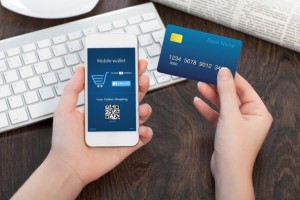How Small and Medium Businesses Can Maximize Sales Using Mobile Payments
— April 15, 2015Mobile payments are no longer a futuristic concept; they have become a powerful tool for businesses to grow. By integrating mobile payment solutions, businesses can convert prospects into loyal customers while building lasting relationships. Many early adopters, especially small businesses, are already reaping the benefits of mobile tools. They report increased customer engagement, higher average transaction values, and improved sales figures. Below is a detailed exploration of five effective ways small and medium businesses (SMBs) can harness mobile payments to enhance sales.
The Importance of a Digital Wallet Presence
To thrive in a competitive market, businesses must meet consumers where they are—on their mobile devices. Mobile payment acceptance is the first step to engaging consumers. When a business establishes a presence on a consumer’s phone, it opens up opportunities for delivering targeted offers, personalized services, and faster payment options. A digital wallet presence is a critical component of this strategy.
Small businesses, however, often face challenges in building their own apps due to cost and engagement limitations. Standalone apps for offers or services have proven to lack long-term consumer interest. This makes digital wallets an effective and economical alternative. Digital wallets provide a unified platform for consumers to access multiple merchants, making them convenient and versatile. Investing in a digital wallet now positions businesses to engage consumers as mobile payment adoption continues to grow.
By embedding themselves in a digital wallet, businesses gain a direct channel to their customers’ attention. Early adoption also ensures SMBs stay ahead of competitors who delay this transition. S3Corp, a leader in web and mobile outsourcing solutions in Vietnam, emphasizes that digital wallets offer businesses a robust entry into mobile payment ecosystems.
The Need for Simplicity in Mobile Payments
Mobile payment solutions must prioritize simplicity. Consumers are quick to abandon systems that are cumbersome or unintuitive. For mobile payment adoption to be widespread, the process must be seamless. A user-friendly interface eliminates barriers such as manual entry of payment details, usernames, or passwords.
Consider examples where ease of use has driven adoption. Some mobile apps allow users to complete transactions with a single touch, streamlining the payment journey. This degree of simplicity is not just a convenience; it is a requirement. Complex or tedious processes can lead to consumer frustration and, ultimately, lost sales. Businesses, especially those working with outsourcing partners in Vietnam for mobile app development, should prioritize creating solutions that simplify the payment process for users.
Incentives to Drive Consumer Engagement
Digital wallets provide businesses with a powerful way to incentivize customer engagement. However, their effectiveness hinges on consumer adoption. Businesses must actively encourage customers to integrate their payment solutions into everyday purchases. This can be achieved through targeted offers, promotions, and loyalty programs.
For instance, coupons pushed directly to a consumer’s digital wallet can drive initial use. Integrating loyalty programs that reward repeat usage ensures long-term engagement. A prominent example of this strategy is the Starbucks mobile app, which combines payment functionality with a rewards program. Customers earn points for every transaction, which they can redeem for free items or discounts. The app’s success, measured by millions of weekly digital wallet payments, demonstrates the effectiveness of incentives in driving engagement.
Small businesses can replicate this approach by offering discounts or loyalty benefits to customers who use mobile payments. These incentives not only increase the frequency of transactions but also foster customer loyalty, resulting in higher lifetime value.
Improving the Customer Experience with Mobile Payments
Enhancing the overall shopping experience is a crucial goal for businesses adopting mobile payments. Mobile payment solutions do more than simplify transactions—they can transform the way customers interact with businesses. A seamless integration of digital wallets across physical and digital channels ensures a cohesive and satisfying shopping journey.
For example, some digital wallets allow customers to skip checkout lines by using order-ahead features. In restaurants, mobile payments can streamline the process by enabling customers to pay at the table. These innovations address common pain points, such as waiting for a server to process payments. Instead, customers can view their bill, add a tip, and complete the transaction at their convenience.
By addressing these inefficiencies, businesses improve customer satisfaction and drive adoption of mobile payment solutions. SMBs partnering can leverage web and mobile development expertise to implement such features. These innovations enhance the shopping experience while increasing customer retention and sales.
Choosing the Right Partner for Mobile Payments
The success of a mobile payment strategy depends on selecting the right partners. SMBs should collaborate with payment providers whose interests align with their own. A good partner will not compete with the business or prioritize their own interests over those of the merchant.
To simplify operations, businesses should limit the number of partners they work with. Managing multiple partnerships can be time-consuming and detract from core business activities. A reliable partner should also provide tools to help businesses use data effectively. Insights from purchase history and customer behavior can inform targeted offers and improve the relevance of marketing efforts.
For example, predictive analytics can help brick-and-mortar stores personalize promotions, mirroring successful eCommerce strategies. By selecting partners that enhance data-driven decision-making, SMBs can deliver a more tailored customer experience.
Preparing for the Future of Mobile Payments
While widespread adoption of mobile payments is still developing, businesses cannot afford to wait. Preparing now ensures they remain competitive and ready to meet consumer expectations. As mobile payment technology continues to evolve, early adopters will have the advantage of experience and established consumer trust.
SMBs must act decisively to integrate mobile payment solutions into their operations. This includes building a presence in digital wallets, simplifying payment processes, offering meaningful incentives, improving customer experiences, and choosing the right partners. By doing so, businesses can drive sales, enhance customer loyalty, and secure their position in a rapidly changing marketplace.
Conclusion
Mobile payments offer SMBs a significant opportunity to grow their sales and build stronger customer relationships. By adopting strategies that prioritize convenience, incentives, and improved experiences, businesses can encourage consumer adoption and increase revenue. Partnering with reliable providers and leveraging expertise from outsourcing hubs like Vietnam can further enhance the effectiveness of these efforts. The time to embrace mobile payments is now, and businesses that act promptly will reap the benefits of this transformative technology.









